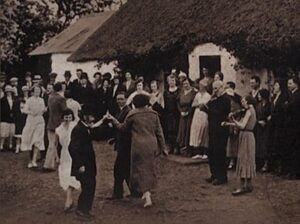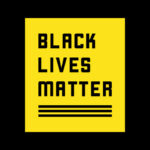“Dancing Song” – the very phrase conjures images of joyous gatherings, rhythmic movements, and carefree spirits. But what happens when a dancing song carries a deeper emotional current, a bittersweet undercurrent of nostalgia and longing? “The Days of the Kerry Dancing,” a piece I recently encountered while preparing for our Cherry Creek Chorale’s Celtic concert, is precisely such a song. Initially, the sheet music evoked a surprising sense of sadness in me, prompting me to explore beyond its seemingly cheerful facade.
 Irish Dancers in Traditional Costume
Irish Dancers in Traditional Costume
The Power of “Oh”: Unpacking the Emotion in a Simple Word
The song opens with a simple yet profoundly expressive word: “Oh!” This tiny interjection is a gateway to a range of emotions. Think about it – “Oh!” can signify surprise, delight, anger, pain, disappointment, and crucially, longing. In “The Days of the Kerry Dancing,” it’s this sense of yearning that resonates most strongly.
The very first line, “Oh! The days of the Kerry dancing!” immediately establishes this wistful tone. It’s not a celebratory “Oh!” but an “Oh!” laden with remembrance. This feeling is amplified in the third line with “Oh, for,” another clear expression of desire for something lost:
Oh, for one of those hours of gladness gone, alas! Like our youth too soon!
Here, “Oh, for” acts as a direct substitute for “I long for” or “I wish for.” The lyrics paint a picture of lament for bygone days, a time when youthful exuberance filled the air with dance and laughter, free from the burdens of the present. The rosy hue of nostalgia washes over these memories, selectively filtering out any imperfections that might have existed. Perhaps youthful romances were complicated, worries about the future loomed, or life wasn’t as idyllic as remembered. Nostalgia, however, often edits out these complexities, leaving behind a shimmering image of a perfect past.
Nostalgia’s Paradox: Sweet Memories, Bitter Present
The song vividly recalls specific highlights of these “Kerry dancing” days. We envision Eily, the sweet Colleen, and Thady, the proud lad, taking to the floor. We hear the caller’s instructions and the Kerry piper tuning his instrument. The air is filled with laughter and joy. But instead of eliciting happiness, these memories “fill my heart with tears.”
This is the central paradox of the song and of nostalgic feelings in general. If the speaker were content in the present, these recollections would likely bring a smile, a warm sense of gratitude for past happiness. However, the tears reveal a present that is lacking, “lonely, or dreary, or tragic.” In such circumstances, happy memories don’t uplift; they sharpen the contrast between a joyful past and a less fulfilling present. This sentiment is so potent that a quick online search reveals the term “nostalgic depression,” perfectly encapsulating this poignant emotional state. It’s not just about remembering good times; it’s about the ache of knowing those times are irretrievably gone, and perhaps, the present falls short in comparison.
The speaker doesn’t yearn for a complete return to youth, an impossible wish. Instead, “Oh, for one of those hours” reveals a more modest desire – just a fleeting taste of that past joy would be enough. This resonates with the famous scene in Thornton Wilder’s Our Town, where Emily revisits a day from her life after death and poignantly exclaims, “O earth, you’re too wonderful for anybody to realize you.” She then asks if humans ever truly appreciate life as they live it, every minute. The Stage Manager’s reply, “No. _ The saints and poets, maybe-they do some,” highlights another paradox: constant awareness of time’s fleeting nature might actually detract from experiencing happiness itself.
Beyond the Folk Song Label: The Composer and Irish Musical Heritage
While often categorized as a folk song, “The Days of the Kerry Dancing” actually has a known composer for both lyrics and music: James Lynam Molloy (1837-1909), an Irishman. Interestingly, despite many of his Irish-themed songs not incorporating traditional Irish melodic or rhythmic elements initially, their popularity in the early 20th century led to some gaining “folksong status.” “The Kerry Dance” (1879) is a prime example.
This folk song designation, while a testament to the song’s authentic Irish feel, might be a bittersweet recognition for Molloy. It speaks volumes about the song’s evocative power but perhaps overshadows his individual artistry. With the song now in the public domain, there’s no financial implication, but potentially a slight reputational nuance.
Molloy envisioned the dancers in a natural setting, “the glen of a summer night,” rather than a formal ballroom. This outdoor, spontaneous gathering, sparked by “the Kerry piper’s tuning,” adds to the song’s charm. “Kerry” refers to County Kerry in western Ireland, and the “piper” plays the Irish bagpipes, known as “uilleann pipes” or “elbow pipes.” Unlike Scottish bagpipes powered by breath, uilleann pipes use bellows operated by the elbow, offering advantages like drier air for the reeds, improving tuning and longevity, and even allowing pipers to converse or sing while playing.
Experiencing the Music: From Choral Renditions to Solo Performances
While YouTube offers numerous renditions of “The Days of the Kerry Dancing,” choral versions are less common. However, a choral arrangement with a striking piano accompaniment is available online, showcasing the song’s versatility.
[Listen to a Choral Version of “The Days of the Kerry Dancing”](https://www.youtube.com/watch?v=your_youtube_link_here – replace with actual link if found)
And while Julie Andrews’ youthful interpretation is well-known, the powerful rendition by [Artist Name – if available from the original link, otherwise remove] on the album “[Album Title]” is particularly moving, offering a purely audio experience that highlights the song’s emotional depth.
Listen to a Digital Track of “The Days of the Kerry Dancing”
The Enduring Lyrics: A Poem of Nostalgia
Here are the complete lyrics of this evocative dancing song:
Oh, the days of the Kerry dancing
Oh, the ring of the piper’s tune
Oh, for one of those hours of gladness
Gone, alas, like our youth, too soon!
When the boys began to gather
In the glen of a summer night
And the Kerry piper’s tuning
Made us long with wild delight!
Oh, to think of it
Oh, to dream of it
Fills my heart with tears!
Oh, the days of the Kerry dancing . . .
Was there ever a sweeter Colleen
In the dance than Eily More
Or a prouder lad than Thady
As he boldly took the floor.
Lads and lasses to your places
Up the middle and down again
And the merry hearted laughter
Ringing through the happy glen!
Oh, to think of it
Oh, to dream of it
Fills my heart with tears!
Oh, the days of the Kerry dancing . . .
Time goes on, and the happy years are dead
And one by one the merry hearts are fled
Silent now is the wild and lonely glen
Where the bright glad laugh will echo ne’er again
Only dreaming of days gone by in my heart I hear.
Loving voices of old companions
Stealing out of the past once more
And the sound of the dear old music
Soft and sweet as in days of yore.
When the boys began to gather
In the glen of a summer night
And the Kerry piper’s tuning
Made us long with wild delight!
Oh, to think of it
Oh, to dream of it
Fills my heart with tears!
Oh, the days of the Kerry dancing
Oh, the ring of the piper’s tune
Oh, for one of those hours of gladness
Gone, alas, like our youth, too soon!
“The Days of the Kerry Dancing” is more than just a “dancing song”; it’s a poignant reflection on time, memory, and the bittersweet nature of nostalgia. It reminds us that even within the most cheerful melodies, there can be layers of emotion, waiting to be discovered and appreciated. It’s a song that resonates not just with the joy of dance, but with the universal human experience of longing for moments gone by.

